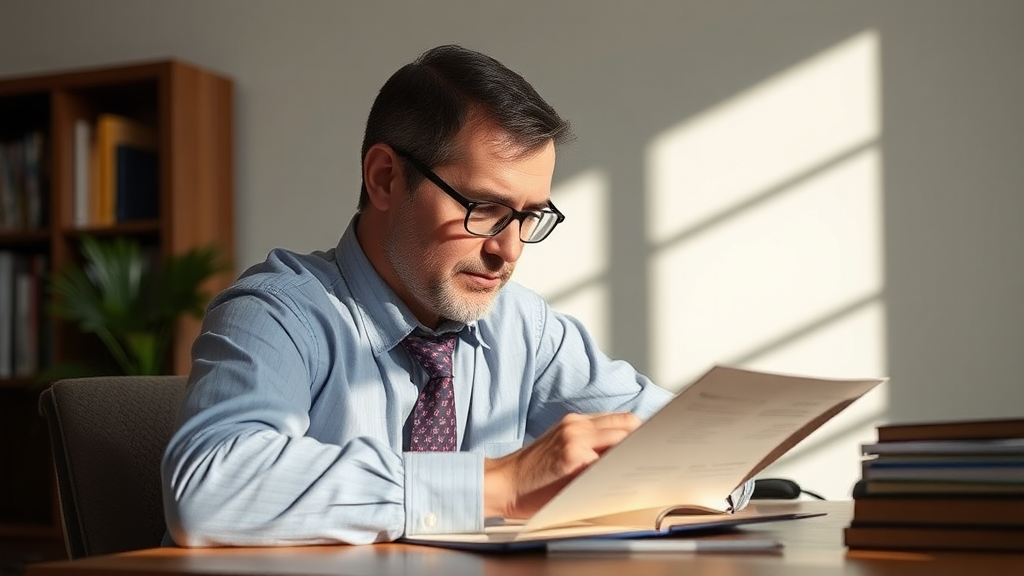What is Bankruptcy
Understanding Key Personal Bankruptcy Info
bankruptcy, what is
Personal bankruptcy in Canada is a legal process where individuals unable to repay debts can get a fresh start under the Bankruptcy and Insolvency Act (BIA). Eligibility includes specific debt thresholds and exclusions like student loans and alimony. The process involves consulting a Licensed Insolvency Trustee, paperwork, and credit counselling. Bankruptcy impacts your credit score and may lead to asset loss but helps discharge many debts. After discharge, focus on rebuilding credit and financial health to avoid future troubles.

Article: What is a Personal Bankruptcy
Understanding Personal Bankruptcy
Definition of personal bankruptcy in Canada., Purpose and goals of filing for bankruptcy., Overview of the Bankruptcy and Insolvency Act (BIA).
Personal bankruptcy in Canada is a legal process that offers individuals struggling with severe debt an opportunity for a fresh start. When a person can no longer pay their bills, bankruptcy allows them to eliminate most of their unsecured debts, like credit card balances or personal loans. This process is governed by the Bankruptcy and Insolvency Act (BIA), which aims to provide fair treatment for both debtors and creditors. For instance, if someone has accumulated enormous credit card debt due to unforeseen medical expenses, filing for bankruptcy can help them wipe the slate clean and start anew.
The purpose and goals of filing for bankruptcy extend beyond just debt relief. It’s about providing a structured way to deal with insurmountable financial stress while ensuring essential needs are met. It pauses most collection actions from creditors, meaning no more harassing phone calls or letters. Additionally, it allows individuals to keep certain exempt assets, like basic household furnishings and a personal vehicle up to a certain value. For someone like a single parent struggling to make ends meet, this can mean regaining peace of mind and the ability to focus on supporting their family without the looming threat of wage garnishments.
The Bankruptcy and Insolvency Act (BIA) is the cornerstone of Canada’s bankruptcy system, providing the framework for both personal and corporate insolvencies. Administered by the Office of the Superintendent of Bankruptcy (OSB), the BIA ensures that the process is transparent and equitable for all parties involved. The Act outlines the roles and responsibilities of Licensed Insolvency Trustees (LITs), who are professionals authorized to administer bankruptcies. For example, if you’re unable to pay your debts, an LIT will guide you through the process, ensuring your rights are protected while working out how your remaining assets will be distributed among creditors.
Who Can File for Personal Bankruptcy
Eligibility criteria for filing bankruptcy., Types of debts that can be discharged., Debts that cannot be included in bankruptcy (e.g., student loans, alimony).
Filing for personal bankruptcy in Canada is an option for individuals struggling with significant debt, but there are specific eligibility criteria. To file for bankruptcy, you must be insolvent, meaning you owe at least $1,000 and are unable to meet your financial obligations as they come due. It’s also crucial to demonstrate that your assets' total value is less than your total debts. Bankruptcy is often a last resort, but it’s a lifeline for many when other debt relief solutions fall short. Lots of folks might feel overwhelmed by these requirements, but meeting with a Licensed Insolvency Trustee (LIT) can help clarify whether bankruptcy is the right step for you.
One of the first questions people ask about bankruptcy is which debts can be wiped out. The good news is that bankruptcy can discharge various types of unsecured debts, such as credit card balances, personal loans, and lines of credit. This means these debts will be legally forgiven once the bankruptcy process is complete. For example, if someone has $20,000 in credit card debt and $10,000 in personal loans, those debts could potentially be erased through bankruptcy, allowing that person to start fresh without those burdens.
However, it’s important to note that not all debts are discharged through personal bankruptcy. Certain financial obligations remain, including student loans if you haven’t been out of school for at least seven years (a common exception that catches many off guard), alimony, child support payments, court-imposed fines, and secured debts like mortgages and car loans. So, if Gabriel has been out of university for only five years and owes $15,000 in student loans, filing for bankruptcy won’t wipe out that student debt just yet. Recognizing which debts stick around helps set realistic expectations and can significantly influence the decision-making process.
Elimiate up to 80% of Your Debt
High cost of gas, high cost of groceries, high lending rates, low salary - being in debt is not your fault! See if you qualify for government debt programs and get out of debt today!
Steps Involved in Filing for Personal Bankruptcy
Initial consultation with a Licensed Insolvency Trustee (LIT)., Filing the necessary paperwork and documentation., Attending mandatory credit counselling sessions.
Filing for personal bankruptcy in Canada usually begins with an initial consultation with a Licensed Insolvency Trustee (LIT). Think of the LIT as your financial lifeline—they're federally regulated professionals who can provide you with expert advice about your debt situation. During this first meeting, the LIT will evaluate your financial health, discussing your income, expenses, assets, and the extent of your debts. By painting this clear picture, they help you understand whether bankruptcy is the right option or if there might be other debt relief solutions that could work for you. It’s a no-pressure scenario aimed at giving you the best advice for your unique situation.
Once you and the LIT decide that bankruptcy is the right step, the next phase involves filing the necessary paperwork and documentation. This part might sound tedious, but it’s crucial. You’ll be required to provide comprehensive details about your financial situation, including assets, liabilities, income, and expenses. The LIT will help you gather and prepare these documents to ensure everything is accurate and complete. It’s a bit like doing your taxes, but with a more significant impact on getting you out of a financial bind. Remember, attention to detail here can make the process smoother and help you avoid delays.
After you’ve filed for bankruptcy, one of the mandatory requirements is attending credit counselling sessions. These sessions are designed to equip you with the skills and knowledge to manage your finances better and avoid future debt problems. Think of it as financial education on steroids—covering topics like budgeting, credit management, and saving strategies. You’ll attend at least two sessions, usually held one-on-one with a qualified credit counsellor. It’s not just about fulfilling a requirement; it’s about empowering yourself to build a solid financial future. So, while bankruptcy may seem daunting, these steps are designed to support you every step of the way.

Understanding what is bankruptcy and its impact on finance.
Consequences of Filing for Personal Bankruptcy
Impact on credit rating and financial future., Potential loss of assets and properties., Legal obligations and follow-up activities during bankruptcy.
Filing for personal bankruptcy in Canada has significant consequences for your credit rating and financial future. Your credit score will take a major hit, as bankruptcy remains on your credit report for 6 to 7 years depending on the credit bureau. This makes obtaining new credit, such as loans or credit cards, more challenging. Financial institutions may view you as a high-risk borrower. However, don't despair; you can rebuild your credit over time by demonstrating responsible financial behavior—paying bills on time, securing a secured credit card, and gradually restoring your financial reputation.
Another important aspect to consider is the potential loss of assets and properties. When you file for bankruptcy, a licensed insolvency trustee (LIT) takes control of your assets to pay off your creditors. While there are exemptions for essential items like basic household furniture and tools necessary for work, luxury items and properties, such as a second car or vacation home, may be liquidated. For example, if you have significant equity in your home, you might be required to sell it to satisfy part of your debts. Understanding what you might lose can help manage expectations and plan accordingly.
Legal obligations and follow-up activities are also crucial components of the bankruptcy process. Once you declare bankruptcy, you’re required to attend two financial counseling sessions aimed at helping you manage your finances better and avoid future insolvency. Additionally, you must submit monthly income and expense statements to your LIT and possibly pay surplus income if your earnings exceed a specific threshold. Completing these duties is essential for obtaining your discharge, which marks the end of the bankruptcy process and the opportunity for a fresh financial start. Failing to comply can prolong the process and delay your economic recovery.
Post-Bankruptcy: Life After Discharge
Obtaining a discharge from bankruptcy., Rebuilding credit and financial health., Tips for avoiding future financial troubles.
Obtaining a discharge from bankruptcy marks a critical turning point for many Canadians. It's essentially your financial fresh start. Once your bankruptcy is discharged, which typically happens nine months to a year after filing, you'll be free from most of your debts. For instance, imagine John, who struggled with overwhelming credit card debt. After his discharge, he's no longer obligated to pay most of his creditors. However, it’s essential to note that some debts, like student loans and child support, aren't covered by bankruptcy. The key takeaway? Knowing your obligations post-discharge ensures you’re truly starting with a clean slate.
Next on your journey is rebuilding your credit and financial health. Think of it like nursing a plant back to health—it requires care and patience. Start by obtaining a secured credit card. Though it may sound intimidating, it’s a low-risk strategy to rebuild your credit score. For example, Lisa, post-bankruptcy, used a secured card to make small, manageable purchases and diligently paid off her balance monthly. Over time, her credit score improved significantly. Alongside this, ensuring you consistently pay bills on time and reviewing your credit reports for inaccuracies can further accelerate your financial recovery.
To avoid future financial troubles, learning from past mistakes is crucial. Start by creating a robust budget and sticking to it. Take Mark, who post-bankruptcy, meticulously tracked every dollar spent and set aside an emergency fund. This not only helped him manage day-to-day expenses but also cushioned him against unforeseen financial shocks. Avoid accumulating high-interest debts like payday loans, and seek professional advice when needed. By cultivating prudent financial habits, you’ll be better positioned to maintain financial stability and steer clear of the stress and uncertainty of debt troubles.
References
| Title, Source |
|---|
| Bankruptcy and Insolvency Act (BIA), Government of Canada |
| Personal Bankruptcy in Canada: How It Works, Hoyes, Michalos & Associates Inc. |
| A Guide to Personal Bankruptcy in Canada, BDO Canada |
| Bankruptcy: What Happens When You File for Bankruptcy, Office of the Superintendent of Bankruptcy Canada |
| Life After Bankruptcy: What to Expect and How to Rebuild, MNP Debt |
This article references information from the above sources.
Elimiate up to 80% of Your Debt
High cost of gas, high cost of groceries, high lending rates, low salary - being in debt is not your fault! See if you qualify for government debt programs and get out of debt today!